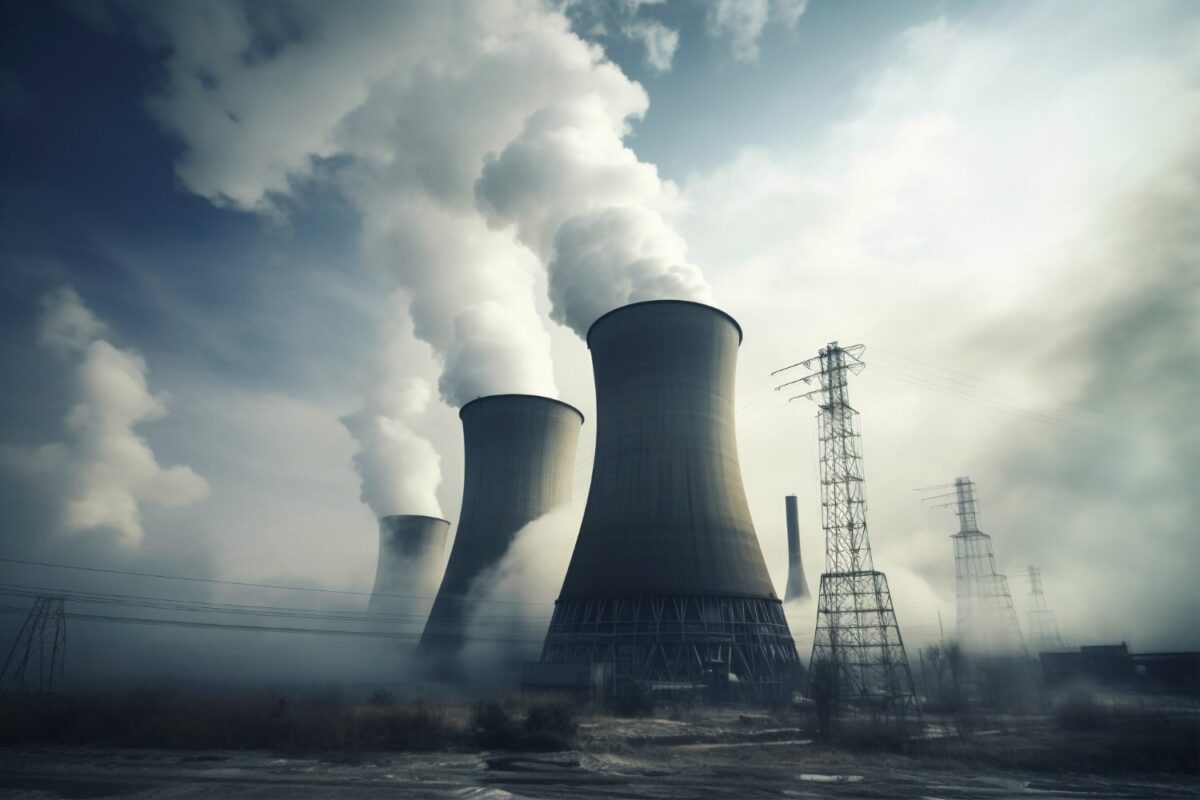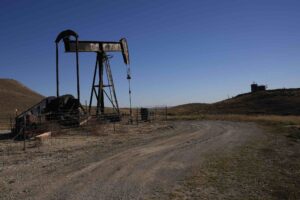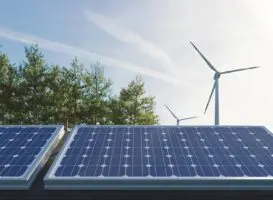Tony Barry, former deputy state director of the Victorian Liberal Party, describes the Coalition’s decision to make nuclear power the centrepiece of its energy and climate policy as “the longest suicide note in Australian political history”.
Nothing in opposition leader Peter Dutton’s announcement this morning will change that assessment. There were rumours that Dutton might announce just a couple of potential nuclear power sites to limit the political fallout, but he has announced seven sites in five states for his coal-to-nuclear fantasies:
* Liddell Power Station, Hunter Valley, New South Wales
* Mount Piper Power Station, near Lithgow, New South Wales
* Loy Yang Power Stations, Latrobe Valley, Victoria
* Tarong Power Station, north-west of Brisbane, Queensland
* Callide Power Station, west of Gladstone, Queensland
* Northern Power Station, Port Augusta, South Australia (small modular reactors (SMR) only)
* Muja Power Station, near Collie, Western Australia (SMR only)
There are problems aplenty with all of these sites. Queensland, New South Wales and Victoria have legislation banning nuclear power, and bipartisan support at the state level to retain those legal bans. There is no support from the WA Labor government or the state Liberal opposition.
South Australia’s last coal power plant, near Port Augusta, was shut down in 2016 and the region has since become a renewables hub.
SA has gone from 1 percent renewable electricity supply to 74 percent over the past 16 years and aims to reach 100 percent net renewables by 2027.
Perhaps Port Augusta made the list because federal MP Rowan Ramsey is retiring and presumably couldn’t care less about the political fallout.
Dutton expects support from SA Premier Peter Malinauskas, but Malinauskas says: “Every single objective, independent analysis that has looked at this has said nuclear power would make power more expensive in Australia rather than cheaper. Why we would impose that burden on power consumers in our country is completely beyond me.”
Costs
As luck would have it, the Australian Conservation Foundation (ACF) released a detailed report on the Coalition’s nuclear power fantasies this morning and it provides a useful corrective to the Coalition’s lies.
Dutton and Nationals Leader David Littleproud claim that nuclear reactors will deliver cheaper electricity ‒ without providing any evidence or any costing of their nuclear plans.
Their claim isn’t supported by the evidence collated in the ACF report; or in the latest version of CSIRO’s GenCost studies; or in a recent report prepared for the Clean Energy Council by Egis, a leading global consulting, construction and engineering firm; or in a report on the economics of small modular reactors (SMRs) by the Institute for Energy Economics and Financial Analysis; or in the latest levelised cost analysis released by investment firm Lazard.
In 2023, the federal Labor government released an energy department estimate that it would cost A$387 billion to replace the 21.3 GW capacity of Australia’s retiring coal fleet with SMRs. Whether small or large reactors were chosen (or some combination of both), the figure could be much higher.
For SMRs, the most recent, credible costing is NuScale’s estimate of A$30.3 billion/GW. For the Vogtle project in the US, the estimate is A$23.6 billion/GW. For the Hinkley Point project in the UK, the estimate is A$27.2 billion/GW. The following table uses those figures to estimate the cost of 21.3 GW of nuclear capacity:
| A$ / GW | Cost for 21.3 GW | |
| SMR — NuScale | 30.3 | A$645 billion |
| US — Vogtle | 23.6 | A$503 billion |
| UK — Hinkley Point | 27.2 | A$579 billion |
The cost would amount to at least half a trillion dollars even without considering the vast costs associated with training nuclear workers; establishing and maintaining a regulatory system; security considerations, nuclear waste management and more.
Shadow energy minister Ted O’Brien cites a US Department of Energy report estimating that leveraging existing infrastructure at coal sites could reduce reactor costs by 30%.
In fact the report estimates cost reductions of 15-35% compared to construction on a greenfield site. Would a 30% reduction make nuclear power economically viable in Australia? The following calculations from the ACF report suggest not:
| Cost estimates | A$ / MWh |
| Lazard’s levelised cost estimate for large reactors (US$141‒221 / MWh, A$213-334 / MWh), minus 30% | 149-234 |
| CSIRO 2030 estimate for SMRs (A$212‒353 / MWh), minus 30% | 148-247 |
| CSIRO 2030 estimate for 90% wind and solar with integration costs (energy storage and transmission) | 69‒101 |
Even with a speculative 30% cost reduction, nuclear power is still far more expensive than firmed renewables. Even if nuclear costs were reduced by 50%, nuclear power would not be competitive. Nuclear costs for large or small reactors would need to be reduced by two thirds for nuclear power to compete with firmed renewables. There is no reasonable expectation that this could or would ever occur.
Timing
Dutton and David Littleproud claim that reactors will start producing electricity by 2035 (with small modular reactors) or 2037 (if modern larger plants are found to be the best option).
That claim is absurd. As the ACF report notes, introducing nuclear power to Australia would necessitate:
* An estimated 10 years for: licensing approvals; a tender process and vendor selection; complex discussions and negotiations over the taxpayer subsidy package; financing and insurance arrangements; establishing a regulatory system; site selection, purchase and infrastructure development; establishing and maintaining a social license to operate; workforce recruitment and training; an environmental impact assessment process; removing a network of state and federal legal and policy bans and advancing agreements between Commonwealth and State/Territory jurisdictions; waste management planning; establishing nuclear safeguards arrangements; dealing with any legal challenges, etc.
* Around 10 years for construction (possibly less, probably more); and
* An estimated 6.5 years of reactor operation to repay the energy and carbon debts from construction.
Thus, even in the unlikely event that federal and state legal prohibitions were repealed in the near future, a nuclear power reactor could only begin operating around the mid-2040s and could only begin to contribute to reducing greenhouse emissions around 2050. Moreover, nuclear power would not reduce greenhouse emissions if it displaced renewables.
Former Australian Chief Scientist Alan Finkel states: “Any call to go directly from coal to nuclear is effectively a call to delay decarbonisation of our electricity system by 20 years.”
A 2020 report by NSW Chief Scientist Hugh Durrant-Whyte, prepared for the NSW Cabinet, said introducing nuclear power would be expensive and difficult and that it would be naïve to think a nuclear plant could be built in less than two decades.
A former Chief Scientific Adviser at the UK Ministry of Defence, Dr. Durrant-Whyte said: “The hard reality is Australia has no skills or experience in nuclear power plant building, operation or maintenance ‒ let alone in managing the fuel cycle. Realistically, Australia will be starting from scratch in developing skills in the whole nuclear power supply chain.”
The hard sell
The Dutton/Littleproud media release is full of nonsense and misinformation. The only thing of interest is the statement that “the Australian Government will own these assets, but form partnerships with experienced nuclear companies to build and operate them.”
Presumably that policy arises from the fact that the federal Coalition doesn’t have the support of the states that might host the reactors, or the companies or utilities that might pursue nuclear power as a commercial venture if not for the fact that it is hideously expensive and, as Westinghouse learned in the US, a road to bankruptcy.
Labor will campaign against nuclear power in the coming election campaign, as will Teal independents and the Greens.
Speaking in parliament earlier this year, Prime Minister Anthony Albanese compared Peter Dutton to a nuclear reactor: “One is risky, expensive, divisive and toxic; the other is a nuclear reactor. The bad news for the Liberal Party is that you can put both on a corflute, and we certainly intend to do so.”
Dr Jim Green is the national nuclear campaigner with Friends of the Earth Australia and co-author of the ACF’s new report, ‘Power Games: Assessing coal to nuclear proposals in Australia: Cost, timing, consent and other constraints’.








